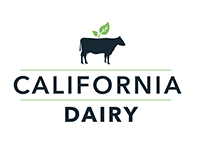The amount of greenhouse gas emissions per each unit of milk produced has decreased more than 45 percent, due to increased milk production efficiency, including improved reproductive efficiency, nutrition, comfort, and overall management.
According to UC Davis researchers, California dairy farms have already stabilized methane emissions, which is a critical step to achieving climate neutrality and global climate goals. Given greater efficiencies, plus a decrease in the number of cows and total milk production in recent years, the amount of methane emitted by California dairies is less today than in 2008. Simply put, California dairy farms are adding less methane today than they did 13 years ago, meaning more methane is being broken down than being emitted into the atmosphere.
California’s dairy farmers are making further progress in reducing the amount of methane emissions released into the environment by installing anaerobic digesters designed to capture methane, or through other projects like compost pack barns and solid separators, which are designed to reduce methane production on farms.
Since 2015, 235 dairy families in California have participated and contributed to methane reduction efforts through the Alternative Manure Management Program (AMMP) and Dairy Digester Research and Development Program (DDRDP) programs, including the 2020 awarded projects. Together, all DDRDP and AMMP projects reduce an estimated 2.3 million metric tons of GHGs per year, which is equivalent to removing more than 495,000 cars from the road.
Dairies are also creating an unparalleled amount of solar energy, helping California achieve its ambitious renewable energy goals. Methane digesters use manure to create clean electricity, natural gas and transportation fuel.


